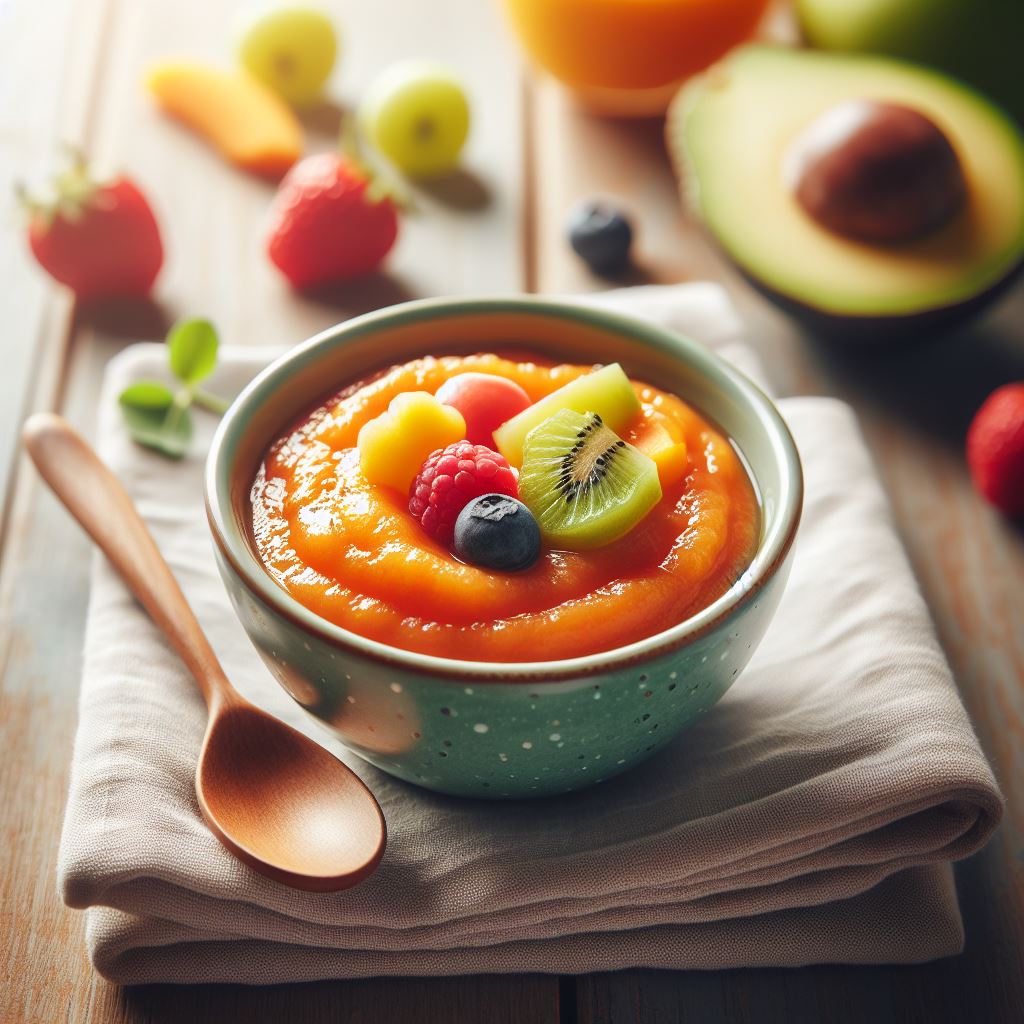
Congratulations on reaching this significant milestone! At six months, your baby is ready to start their solid food journey. After exclusive breastfeeding, introducing complementary foods can be an exciting and crucial step in their development. In this post, we’ll explore the best food ideas for your six-month-old baby, ensuring a smooth transition and a nutritious start.
Best Food Ideas:
1. Single-Ingredient Purees: Start with single-ingredient purees like:
– Avocado: rich in healthy fats and vitamins
– Sweet Potato: packed with vitamin A and fiber
– Banana: a great source of potassium and vitamins
These are easy to digest and less likely to cause allergies.
2. Iron-Rich Foods: Iron is essential for brain development and growth. Try:
– Pureed beef or chicken
– Iron-fortified rice cereal
– Mashed lentils or chickpeas
3. Fruits and Vegetables: Introduce a variety of fruits and vegetables, such as:
– Mashed peaches or pears
– Steamed and pureed carrots or green beans
– Cooked and mashed broccoli or cauliflower
4. Protein Sources: In addition to iron-rich foods, offer other protein sources like:
– Pureed fish (remove bones and skin)
– Mashed tofu
– Lentil or chickpea purees
5. Dairy and Alternatives: If your baby is developmentally ready, introduce:
– Breast milk or formula (continue as main source)
– Pureed yogurt (full-fat, unflavored)
– Soy or almond milk (if recommended by your pediatrician)
Here are some more ideas for your blog post on the best food ideas for a six-month-old baby after exclusive breastfeeding:
Best Food Ideas:

1. _Whole Grains:_ Introduce whole grains like:
– Oatmeal
– Brown rice
– Whole wheat bread (tear into small pieces or make into a puree)
2. _Healthy Fats: Add healthy fats like:
– Mashed avocado
– Olive oil (mix with food)
– Nuts and seeds (grind into a fine powder to reduce choking risk)
3. Lean Protein: Offer lean protein sources like:
– Pureed turkey or chicken
– Mashed fish (remove bones and skin)
– Tofu (mashed or pureed)
4. _Finger Foods: Introduce finger foods like:
– Soft fruits and vegetables (cut into small pieces)
– Whole grain crackers (broken into small pieces)
– Cheese cubes (small and soft)
5. _Homemade Baby Food:_ Consider making your own baby food using fresh ingredients and ice cube trays for portion control.

Tips and Reminders:
– Always supervise mealtime to reduce choking risk
– Cut food into small, manageable pieces
– Encourage self-feeding with finger foods
– Be patient and don’t rush mealtime
– Follow your pediatrician’s guidance and recommendations
Additional Ideas:
– Mix and match foods to create new flavors and textures
– Try different preparation methods (steaming, roasting, grilling)
– Involve your baby in meal prep (let them play with safe kitchen tools)
– Make mealtime a sensory experience (use different colors, shapes, and smells).
Always check with your pediatrician before introducing new foods
– Start with a small amount (1-2 teaspoons) and gradually increase serving sizes
– Mix new foods with breast milk or formula to create a familiar taste and texture
– Introduce new foods one at a time, every 2-3 days, to monitor for any signs of allergy or intolerance
– Make sure your baby is sitting up straight and supported during mealtime
Remember to always prioritize your baby’s safety and health, and consult with your pediatrician if you have any concerns or questions.
By following these guidelines and consulting with your pediatrician, you’ll be well on your way to providing a nutritious and delicious start for your six-month-old baby. Happy feeding!

No Comments